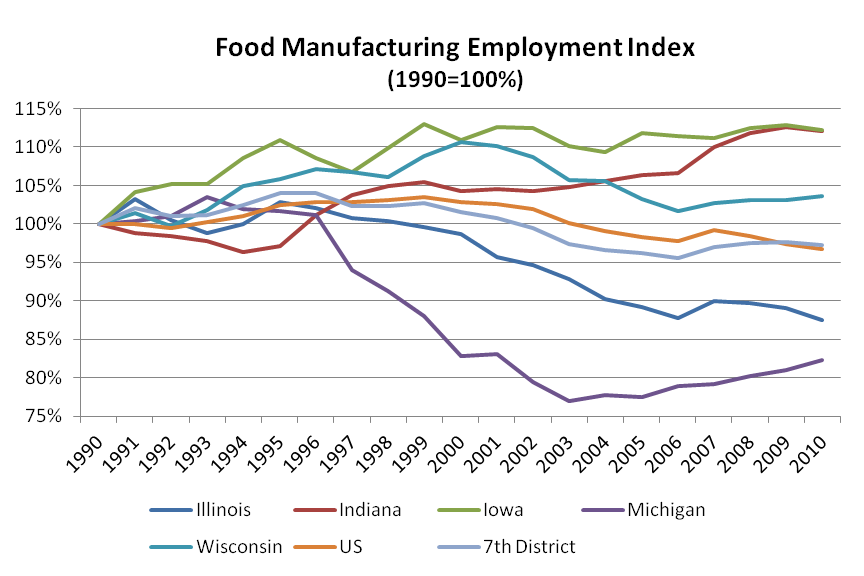Kyle Munson from The Des Moines Register wrote a featured article on the changing population base in the Midwest based on new Census data. Below is the graph from the article:
The lower-left graphic–dependence on manufacturing jobs–is one of the first items I mention to folks when discussing Iowa’s economy. Rural areas rely more on manufacturing than agriculture as a percentage of employment and as a percentage of income after the 1982 recession–most assume it’s agriculture. The Federal Reserve Bank of Chicago noted the greater reliance of non-metro areas on manufacturing in the past decades. In the graph below, the orange areas represent counties which the share of manufacturing income is greater than the statewide average. The white areas are metropolitan areas. In 2009, two-thirds of non-metro counties are highlighted in orange.
Scholars have noted the decline in rural Midwestern states. Often, they point to the high concentration of manufacturing as a perilous position for rural counties. Manufacturing, one could argue, is often outsourced, which would be catastrophic for these communities if a manufacturer left. It is critical to note, however, manufacturing in these areas are often forms of food manufacturing. For instance, corn is rarely sold for corn, but is now used to create products such as high fructose corn syrup and, of course, ethanol (40% of all corn production). Though ethanol is not considered food manufacturing, it is similar insofar as it is the processing of sugars. Manufacturing provides greater gross value-added than the agriculture cultivation process which contributes to a greater proportion of income coming from manufacturing as opposed to agriculture. In reality, manufacturing is still tied to Iowa’s agricultural base, making it harder for those firms to be simply exported.
Iowa has had increasing reliance on food manufacturing for employment. A graph from the aforementioned Federal Reserve Bank of Chicago shows the increase in Iowa in relation to neighboring states:
The rise of manufacturing is notable, but it is a mistake to separate it from Iowa’s agriculture. Fortunately, it means rural Iowa is not just waiting to be outsourced, but it doesn’t guarantee economic growth either. Notable books and articles have touched on the “death” of the rural Midwest–search for any book with “Middle” in its title–which is mostly tied to the shift “away” from agriculture and large migration outflow.


